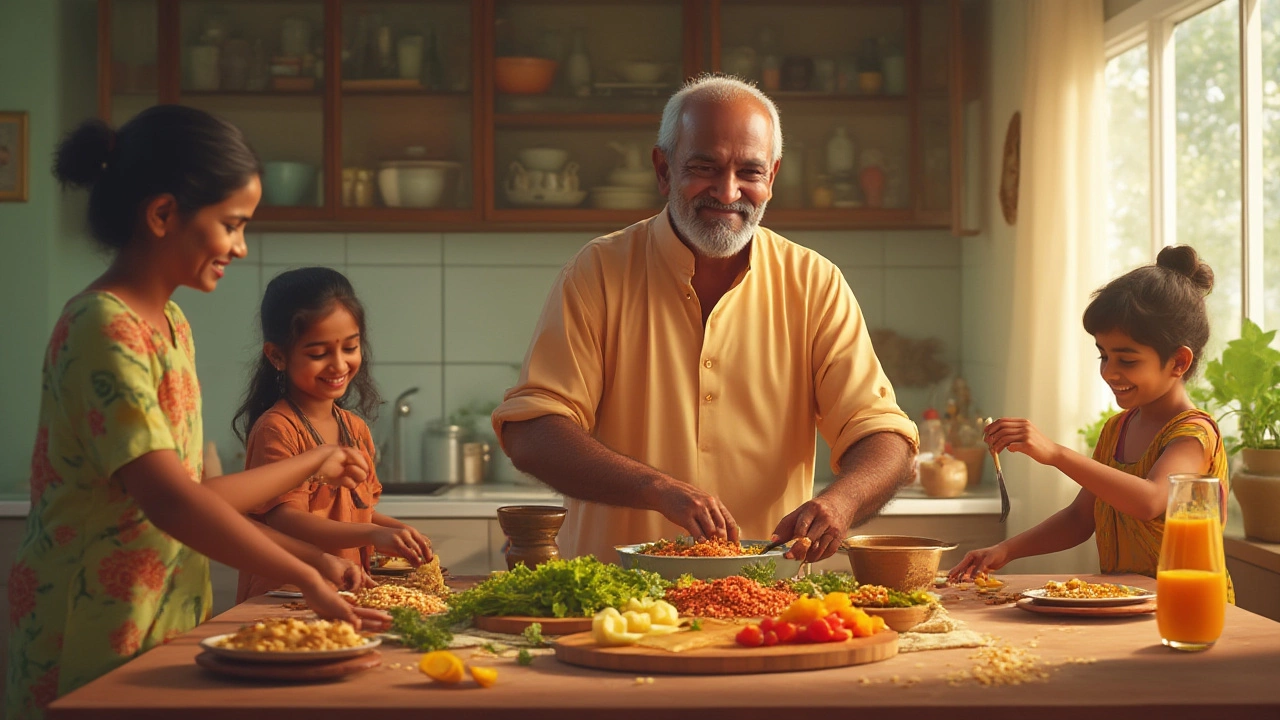Forget what you think you know about weight loss after 50—most of it is outdated, fueled by Instagram fads, or tossed around at family gatherings without much science behind it. The real deal? Dropping twenty pounds at this stage is absolutely possible, but the approach has to shift from what might have worked in your 20s or 30s. Hormones, metabolism, lifestyle, sleep, cravings—they’re all playing by different rules now. But people who nail the strategy do see serious changes, not just on the scale but also in energy, mood, and those numbers at your next checkup.
What Changes After 50? Your Body’s New Playbook
So why does shedding weight feel like running up an escalator that’s moving down after your 50th birthday? The game changes primarily due to muscle loss (about 1-2% per year after 50), which slows metabolism. Lesser muscle means your body burns fewer calories sitting still. Menopause for women and testosterone decline for men add another twist: more fat tends to land around the belly, and cravings may spike out of nowhere. Not to mention, joint aches, slower recovery, and sometimes a sluggish thyroid can make intense workouts feel punishing.
But here’s the kicker: people over 50 who focus on resistance training—think simple dumbbells, resistance bands, or even bodyweight—a few times a week, can stop and even reverse muscle loss. Harvard published a study showing that adults who strength trained two or more times per week had a 46% lower chance of obesity compared to those who didn’t. Building muscle isn’t about bulking up; it’s about turning your body into a calorie-burning machine seven days a week, even while you sleep.
Sleep and stress are sneaky culprits, too. A study from the University of Chicago found that just four nights of poor sleep can reduce insulin sensitivity, making you more likely to store fat. Stress floods your system with cortisol, which loves to stash fat away for later—especially around your middle. A practical takeaway here: consistent sleep routines and five-minute daily mindfulness breaks aren’t just wellness clichés; they actually help your body process calories and food more efficiently.

How to Safely Lose 20 Pounds: Realistic Diet and Lifestyle Tweaks
Here’s where most people trip up: they go for gimmicks. Low-carb today, juice cleanse tomorrow. But over 60% of folks who lose a lot of weight this way gain it all back within a year, according to a study in the New England Journal of Medicine. Instead, let’s look at what works for real people in their 50s, 60s, and beyond.
First, tracking—not obsessively, just enough to know what’s going in. Studies show people underestimate daily calories by up to 40%. Use your phone for a simple food diary. Focus meals around lean proteins (fish, poultry, paneer), tons of non-starchy veggies (bhindi, carrots, cauliflower), and healthy fats (avocado, walnuts, mustard oil). Limit ultra-processed snacks; they’re loaded with hidden sugar and sodium, spiking your insulin and cravings. Try to get at least 25-30 grams of protein per meal; this helps preserve muscle while your body drops fat.
Hydration deserves its own moment. Drinking two extra glasses of water a day can push metabolism up by 24-30% for about 90 minutes, according to German researchers. Plus, a lot of what feels like hunger is actually thirst—especially when you get older.
Movement matters, but you don’t need a gym membership. The key? Consistency. Shoot for 8,000–10,000 steps a day or about an hour of brisk walking. Mix in three resistance sessions a week, even if it’s just using water bottles as weights. Yoga and swimming are favorites for people with cranky knees or hips. Here’s a fun fact: a 15-minute after-dinner walk can slash blood sugar spikes by up to 30%!
Here’s a look at how some habits stack up for fat loss after 50:
| Tip | Estimated Weekly Impact |
|---|---|
| Extra 2 glasses water/day | Up to 1kg/month weight loss |
| Walking 8,000 steps/day | 200–300 extra calories burned/day |
| 30g protein with breakfast | Decreased mid-morning cravings by 50% |
| 3 resistance workouts/week | Increase calorie burn even during sleep |
| Consistent sleep schedule | Lowered belly fat and improved insulin |
Don’t overlook portion sizes. What was a normal meal at 30 is now often oversized. One simple hack: use smaller plates—they trick your brain into feeling full with less. And eat slowly. Your gut needs about 20 minutes to signal your brain that you’re actually full, and rushing can have you reaching for seconds before your body even realizes you’re done.
If you love your cup of chai or coffee, enjoy it—just ditch the sugary biscuits or switch to no-sugar. Alcohol is a sneaky saboteur; even a couple of beers a week add up fast in empty calories and can stall fat-burning.

Keeping the Weight Off and Feeling Good
Rapid weight loss is tempting, but going too fast makes rebound weight gain almost certain. Aim for 1-2 pounds per week—anything faster and you risk muscle loss, which kills metabolism in the long run. The best bit? Most people notice thinner waists and less puffiness in their faces and feet in just 4–6 weeks when they do this right—not to mention easier climbs up the stairs and better sleep.
Accountability makes a massive difference. People who check in weekly—either with a friend, group, or even an app—are over twice as likely to keep weight off a year later. Maybe text that one motivated friend who’s always up for tracking steps or meals, and celebrate small wins. Day-to-day, keep healthy snacks visible (think cucumber slices, roasted chickpeas), and stash the tempting stuff somewhere that’s a hassle to get to.
If you ever feel like results are slowing, don’t panic. As your body gets lighter, it burns less energy by default, so you’ll need to adjust—maybe a touch more activity or a slight tweak in portion size. That’s normal. Also, don’t ignore vitamin D, calcium, and B12. Deficiencies are common after 50 and can tank energy or make weight loss harder. Simple blood work with your doctor can help catch these early.
Indian kitchens are goldmines for healthy, flavorful meals. Swap white rice for millets like bajra and jowar. Use yogurt instead of heavy cream in curries. A weekly dal with plenty of veggies has fiber and protein mixed in one, helping you stay fuller longer. Going out for a meal? Order first, ask for grilled items, and split dessert with the table (or just have chai afterward and skip it—nobody minds).
One last thing: nobody gets this perfect. Life is busy, travel happens, random weddings show up on your calendar. Those are fine. The trick is getting back to your plan at the next meal, not "Monday morning." Dropping 20 pounds after 50 isn’t just possible, it’s done all the time by regular people juggling real jobs, families, and sweet tooths. If they can do it, you absolutely can, too.
